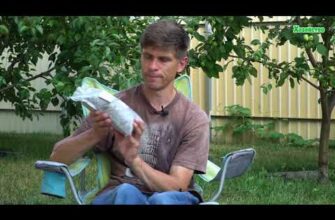- Преимущества использования минеральных удобрений в осенний период
- Увеличение урожайности и качества посевов
- Повышение устойчивости растений к холоду и заболеваниям
- Ускорение роста и развития корневой системы
- Подавление сорняков и вредителей
- Оптимальное использование питательных веществ
- Сохранение почвенной фертильности и структуры
- Важность внесения минеральных удобрений в августе
- Основные преимущества использования простых минеральных удобрений
- Как использовать простые минеральные удобрения осенью
- Повышение содержания полезных микроэлементов в почве
- Улучшение водоудерживающей способности почвы
- Сокращение времени весенней обработки почвы
- Экономия времени и ресурсов при внесении удобрений
- Минимизация негативного влияния погодных условий
- Простота и удобство использования
- Вопрос-ответ:
- Какие минеральные удобрения можно использовать осенью?
- Какие преимущества есть у минеральных удобрений?
- Когда лучше вносить минеральные удобрения – осенью или весной?
- Как правильно вносить минеральные удобрения в почву?
- Какая дозировка минеральных удобрений должна быть?
- Видео:
- ТОЛЬКО НЕ ИСПОЛЬЗУЙТЕ ОСЕНЬЮ ЭТО УДОБРЕНИЕ! Какие удобрения вносить в почву осенью?

Осенний период – это время, когда растения готовятся к зиме и нуждаются в дополнительном питании. Вносить минеральные удобрения уже в августе – отличный способ подготовить грунт к зиме и обеспечить растения всем необходимым для их здорового развития.
Простые минеральные удобрения – это незаменимый инструмент в садоводстве и огородничестве. Они содержат основные макро- и микроэлементы, необходимые растениям для роста и развития. Внося их в почву, мы обеспечиваем растения всеми необходимыми питательными веществами.
Начинать внесение удобрений уже в августе имеет ряд преимуществ. Во-первых, это позволяет растениям получить дополнительные питательные вещества перед наступлением холодов. Во-вторых, осенние удобрения способствуют активизации корневой системы растений, что повышает их устойчивость к зимним заболеваниям и переносу низких температур.
Не забывайте, что вносить осенние удобрения нужно в соответствии с рекомендациями производителя и особенностями конкретного региона. Кроме того, следует учитывать особенности каждого вида растений и их потребность в питательных веществах.
Внесение простых минеральных осенних удобрений уже в августе – это отличное решение для садоводов и огородников, которые хотят обеспечить свои растения всем необходимым перед наступлением зимы. Правильное внесение удобрений поможет растениям лучше перенести зимовку и обеспечит богатый урожай в следующем году.
Преимущества использования минеральных удобрений в осенний период

Весенняя почва обычно является бедной и истощенной после зимы. Поэтому, чтобы обеспечить растения необходимыми питательными веществами, важно вносить удобрения уже в августе, в осенний период.
Простые минеральные удобрения – идеальное решение для осеннего внесения. Они содержат все необходимые макро- и микроэлементы, которые помогут растениям активно расти и развиваться.
Осенние удобрения обладают рядом преимуществ по сравнению с внесением удобрений весной. Во-первых, осенью растения уже подготовлены к зимнему периоду и могут эффективно воспринимать и использовать питательные вещества. Во-вторых, в зимний период основная часть удобрений будет проникать в глубокие слои почвы, что позволит обеспечить растения питательными веществами на протяжении всего следующего сезона.
Важно помнить, что вносить осенние удобрения нужно уже в августе, чтобы растения успели усвоить все необходимые элементы до начала зимы. Рекомендуется выбирать удобрения с высоким содержанием азота, фосфора и калия, так как они являются основными элементами для роста и развития растений.
Увеличение урожайности и качества посевов

В августе начинаем вносить простые минеральные удобрения для осенних посевов. Это необходимая процедура, позволяющая увеличить урожайность и улучшить качество выращиваемых культур.
Минеральные удобрения содержат необходимые растениям макро- и микроэлементы, которые они активно потребляют в осенний период. Они обеспечивают растения нутриентами, способствуя их полноценному росту и развитию. Вносите удобрения в соответствии с рекомендациями по количеству и соотношению элементов питания в зависимости от типа почвы и выращиваемой культуры.
Осенние посевы, получившие достаточное количество минеральных удобрений, имеют лучшие шансы на успешное перезимование и формирование крепкого корневого аппарата. Это позволяет растениям активно расти и развиваться уже весной, что благотворно отражается на урожайности и качестве посевов.
Не забывайте также о борьбе с сорняками и вредителями. Помимо внесения удобрений, проведите обработку почвы гербицидами и инсектицидами. Таким образом, вы обеспечите растениям оптимальные условия для роста и защитите их от вредных организмов.
Повышение устойчивости растений к холоду и заболеваниям
Уже в августе начинаем вносить осенние минеральные удобрения, чтобы повысить устойчивость растений к холоду и заболеваниям. Регулярное внесение удобрений помогает растениям накопить необходимые питательные вещества и укрепить иммунную систему перед наступлением холодного периода.
Минеральные удобрения являются важным источником макро- и микроэлементов, которые необходимы растениям для нормального развития и функционирования. Они способствуют активному росту корневой системы и повышают устойчивость растений к холоду и заболеваниям.
Внесение удобрений в августе позволяет растениям получить необходимые питательные вещества уже к началу осени. Это особенно важно для культур с длительным вегетационным периодом, таких как капуста, морковь, свекла и другие овощные культуры. Регулярное внесение удобрений способствует формированию сильной и здоровой растительной массы, что повышает устойчивость растений к заболеваниям.
Минеральные удобрения можно вносить различными способами: сухими гранулами, раствором или в виде комплексных препаратов. Важно следить за соотношением основных элементов питания – азота, фосфора и калия – чтобы обеспечить растениям все необходимое для их полноценного развития.
Ускорение роста и развития корневой системы

Начинаем уже в августе вносить простые минеральные осенние удобрения для ускорения роста и развития корневой системы растений. Осенние удобрения помогут подготовить почву к зимнему периоду и обеспечить хороший старт для растений в следующем году.
Август — отличное время для внесения удобрений, так как растения все еще активно растут и развиваются, а корни находятся в фазе активного роста. Внося удобрения в августе, мы даем возможность растениям лучше адаптироваться к изменяющимся условиям осеннего периода и укорениться в почве.
Простые минеральные удобрения, содержащие азот, фосфор и калий, играют важную роль в стимуляции роста и развития корневой системы. Азот способствует образованию зеленой массы и увеличению размеров клеток, фосфор улучшает энергетический обмен и стимулирует развитие корней, а калий повышает устойчивость растений к стрессовым условиям и способствует образованию крепкой корневой системы.
Внесение простых минеральных удобрений в августе позволит растениям получить необходимые питательные вещества для активного роста корней и подготовиться к зимнему периоду. Такое удобрение можно внести в почву в виде гранул или раствора, соблюдая рекомендованные дозировки и частоту внесения.
Подавление сорняков и вредителей
Осенние удобрения – это простые, но эффективные средства борьбы с сорняками и вредителями в саду или огороде. Начинаем вносить их уже в августе, чтобы подавить развитие сорняков и уничтожить вредителей перед зимой.
Одним из самых популярных минеральных удобрений для подавления сорняков и вредителей является аммиачная селитра. Она содержит азот, который активно воздействует на развитие сорняков, препятствуя их росту и размножению. Аммиачная селитра также повышает устойчивость растений к вредителям, делая их менее привлекательными для насекомых.
Другими полезными удобрениями для борьбы с сорняками и вредителями являются калийные и фосфорные удобрения. Они повышают иммунитет растений, делая их менее уязвимыми к атакам сорняков и вредителей. Калий и фосфор также способствуют развитию корневой системы растений, что делает их более устойчивыми к внешним факторам.
Важно помнить, что удобрения следует использовать с умом и в соответствии с инструкцией производителя. Их недостаточное или чрезмерное количество может нанести вред растениям. Поэтому перед началом использования осенних удобрений, проконсультируйтесь с опытными садоводами или специалистами в области сельского хозяйства.
Оптимальное использование питательных веществ
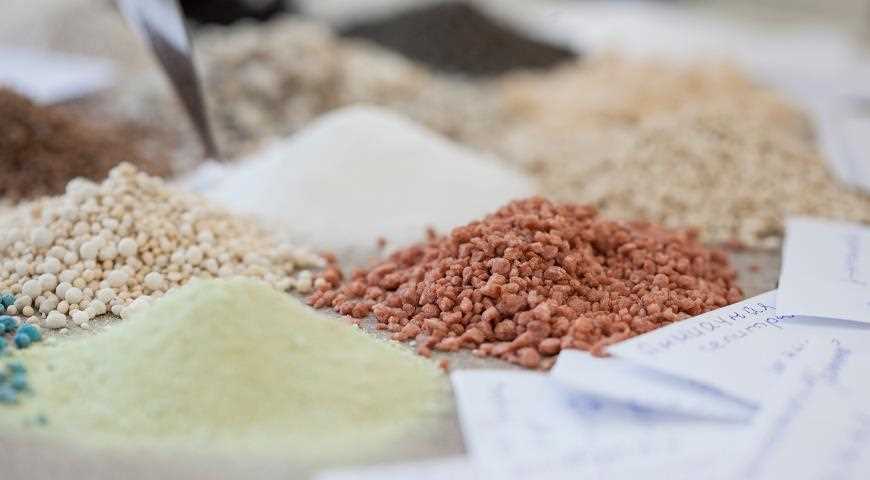
Начинаем уже в августе вносить простые минеральные удобрения, чтобы обеспечить растения необходимыми питательными веществами. Удобрения содержат важные элементы, такие как азот, фосфор и калий, которые способствуют росту и развитию растений.
Минеральные удобрения являются эффективным и быстрым способом обеспечить растения необходимыми питательными веществами. Важно правильно выбрать удобрение и соблюдать рекомендации по его применению. Вносить удобрения следует в соответствии с рекомендуемой дозировкой и в оптимальное время.
Начиная с августа, растения активно подготавливаются к зимнему периоду. Удобрения помогут им укрепить иммунитет, повысить устойчивость к заболеваниям и подготовиться к холодам. Важно помнить, что вносить удобрения следует только на здоровую почву и после полного анализа ее состава.
Простые минеральные удобрения – незаменимый помощник для садоводов и огородников. Они способствуют росту и развитию растений, повышают урожайность и улучшают качество плодов. Важно использовать удобрения в правильной пропорции и с учетом потребностей каждого конкретного растения.
Сохранение почвенной фертильности и структуры
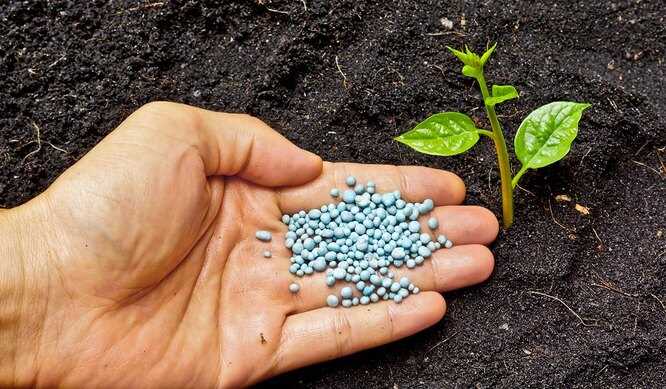
Важность внесения минеральных удобрений в августе
В августе уже наступает осенний период, когда почва готовится к зимнему покою. В это время особенно важно вносить простые минеральные удобрения, чтобы сохранить почвенную фертильность и структуру.
Минеральные удобрения содержат необходимые растениям макро- и микроэлементы, которые позволяют им эффективно развиваться и расти. Внося эти удобрения в августе, мы даем растениям возможность накопить нужные питательные вещества перед началом зимы.
Основные преимущества использования простых минеральных удобрений
Простые минеральные удобрения состоят из отдельных питательных элементов, таких как азот, фосфор и калий. Использование таких удобрений позволяет точно дозировать необходимые элементы в почву и обеспечить растения максимально эффективными ресурсами для роста.
Так стоп!!! Вы всё ещё не подписаны на наши каналы в Телеграмм и Дзен? Посмотрите: ТГ - (@historyfantasydetectivechat) и Дзен (https://dzen.ru/myshortsstorys)
Кроме того, простые минеральные удобрения легко растворяются в воде и быстро усваиваются корнями растений. Это позволяет достичь быстрого роста, улучшить иммунитет растений и повысить их устойчивость к болезням и вредителям.
Как использовать простые минеральные удобрения осенью
Осенью рекомендуется вносить простые минеральные удобрения перед посевом или посадкой культурных растений. Для этого удобно использовать методы полива или применения удобрений в виде гранул.
Важно помнить, что простые минеральные удобрения необходимо использовать с учетом потребностей конкретных культур. Для этого рекомендуется ознакомиться с рекомендациями производителей или проконсультироваться с опытными садоводами.
Внесение простых минеральных удобрений уже в августе позволит сохранить почвенную фертильность и структуру, обеспечить растениям необходимые питательные вещества и подготовить их к зимнему периоду.
Повышение содержания полезных микроэлементов в почве
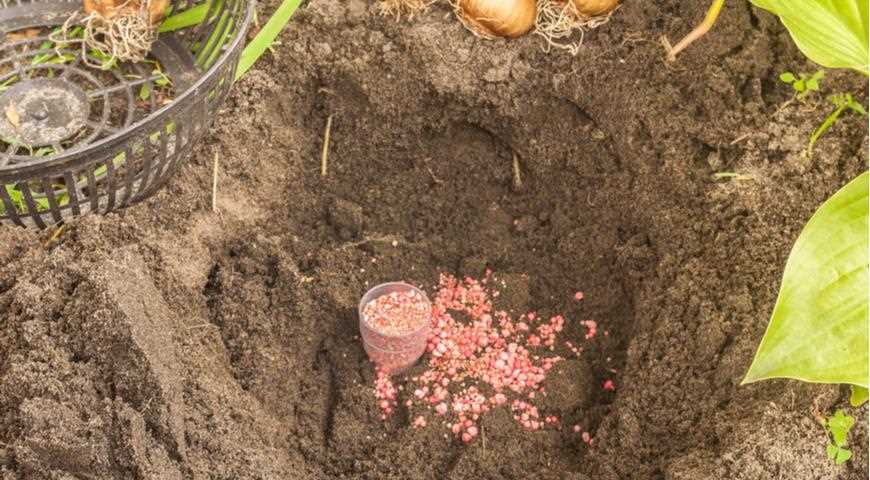
Уже с самого начала августа мы начинаем вносить простые минеральные удобрения в почву, чтобы повысить содержание полезных микроэлементов. Это важный этап подготовки почвы к осеннему периоду и будущему урожаю.
Минеральные удобрения обогащают почву множеством необходимых элементов, таких как азот, фосфор и калий. Они способствуют росту растений, укреплению корневой системы и повышению устойчивости к болезням. Вносятся удобрения в почву в виде гранул или порошка, что позволяет равномерно распределить их по всей площади участка.
Начинаем вносить удобрения уже в августе, чтобы дать почве достаточно времени для усвоения и переработки микроэлементов. Это позволяет подготовить почву к осеннему посеву, а также сохранить ее плодородие на долгое время.
Важно помнить, что простые минеральные удобрения необходимо применять с учетом рекомендаций производителя и особенностей почвы. Перед внесением удобрений рекомендуется провести анализ почвы, чтобы определить ее потребности и состав микроэлементов.
Используя простые минеральные удобрения в августе, мы создаем благоприятные условия для роста растений и повышаем содержание полезных микроэлементов в почве. Это помогает обеспечить хороший урожай и сохранить естественную плодородность участка на долгие годы.
Улучшение водоудерживающей способности почвы
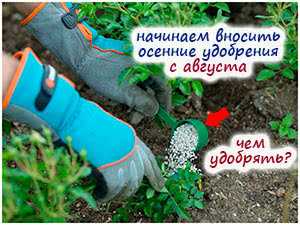
Начинаем вносить простые минеральные удобрения уже в августе, чтобы улучшить водоудерживающую способность почвы. В это время года почва часто становится пересушенной из-за летней засухи, и вносение удобрений может помочь удержать влагу в почве и предотвратить ее высыхание.
Минеральные удобрения содержат необходимые растениям минеральные элементы, которые помогают им восстановиться после стрессовых условий и повысить способность удерживать влагу. Удобрения можно вносить как в жидкой, так и в сухой форме, в зависимости от типа почвы и видов растений.
Рекомендуется использовать удобрения с высоким содержанием калия, так как этот элемент помогает растениям удерживать влагу в клетках и стимулирует развитие корневой системы. Также полезно использовать удобрения, содержащие органические вещества, такие как компост или перегной, которые улучшают структуру почвы и способствуют ее водоудерживающей способности.
Важно помнить, что вносить удобрения следует уже в августе, чтобы дать растениям время восстановиться и подготовиться к осеннему периоду. Регулярное внесение удобрений поможет улучшить водоудерживающую способность почвы и обеспечит растениям достаточное количество влаги для нормального развития.
Сокращение времени весенней обработки почвы
Вносить минеральные удобрения уже в августе позволяет начать осеннюю обработку почвы значительно раньше. Это дает возможность сократить время весенней обработки и подготовить почву к посевам или посадкам еще до наступления зимы.
Осенние удобрения имеют ряд преимуществ перед весенними. Во-первых, они имеют более длительное время для взаимодействия с почвой и обогащения ее питательными веществами. Во-вторых, осенние удобрения позволяют более равномерно распределить питательные элементы по почвенному профилю, что способствует более эффективному их усвоению растениями.
Правильно подобранные и внесенные в августе минеральные удобрения способствуют улучшению структуры и плодородия почвы, повышению урожайности и качества сельскохозяйственных культур. Также позволяют снизить затраты на удобрения и химическую обработку почвы весной.
Экономия времени и ресурсов при внесении удобрений
Простые минеральные осенние удобрения – это отличный способ повысить плодородие почвы и подготовить ее к следующему сезону. Важно начать вносить удобрения уже в августе, чтобы они успели раствориться и проникнуть в почву до наступления холодов.
Одним из главных преимуществ использования минеральных удобрений является их простота в применении. Нет необходимости проводить сложные подготовительные работы или использовать специальное оборудование. Достаточно просто растереть удобрение по почве и внести его в нужном количестве.
Благодаря этой простоте внесения удобрений, вы экономите свое время и ресурсы. Вам не придется тратить время на подготовку специального раствора или перемешивание с другими компонентами. Вам также не потребуется дополнительное оборудование, которое обычно требуется при использовании других типов удобрений.
Кроме того, использование минеральных удобрений в осенний период позволяет вам внести все необходимые питательные вещества для растений заранее. Это обеспечит им хороший старт в следующем сезоне и позволит достичь более высоких урожаев. Вы можете использовать различные виды минеральных удобрений в зависимости от потребностей ваших растений и состояния почвы.
Минимизация негативного влияния погодных условий
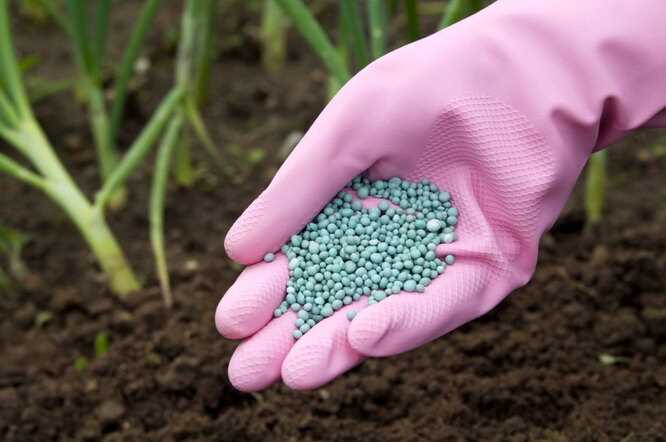
Осенние удобрения – это важная составляющая успешного ведения сельского хозяйства. Начинаем вносить их уже в августе, чтобы земля успела насытиться полезными веществами перед наступлением холодов.
Минеральные удобрения являются одним из самых простых и эффективных способов обеспечить растения необходимыми питательными веществами. Они содержат все основные элементы, которые нужны растениям для роста и развития.
Внесение удобрений в августе имеет свою логику. В этот период почва еще достаточно теплая, что способствует быстрому разложению удобрений и поглощению ими корнями растений. Кроме того, такой подход позволяет минимизировать негативное влияние погодных условий осенью, таких как дожди и заморозки.
Удобрения, вносимые в августе, помогают растениям укрепиться перед наступлением зимы. Они стимулируют рост корневой системы, что позволяет растениям лучше удерживать влагу и питательные вещества. Это особенно важно в условиях переменчивой осенней погоды.
Таким образом, внесение простых минеральных осенних удобрений уже в августе является эффективным способом минимизации негативного влияния погодных условий на растения. Не забывайте о правильном выборе и дозировке удобрений, чтобы получить максимальный результат.
Простота и удобство использования

Простые минеральные удобрения – это отличный способ начать вносить питательные вещества в почву уже в августе. Ведь именно в это время растения нуждаются в дополнительном подкормке для сохранения здоровья и сил перед наступающей осенью. Благодаря доступности и простоте использования, эти удобрения подходят для любого садовода.
Начинаем вносить минеральные удобрения уже в августе, чтобы растения получили все необходимые питательные вещества перед началом холодного времени года. Отличительной особенностью таких удобрений является их быстрая и эффективная ассимиляция растениями, что позволяет им получить все необходимые питательные вещества в кратчайшие сроки.
Удобство использования минеральных удобрений заключается в их простоте и удобстве внесения в почву. Для этого достаточно высыпать необходимое количество удобрения вокруг корневой зоны растения и аккуратно залить водой. При этом не требуется особых навыков и умений, а процесс занимает минимум времени.
Также следует отметить, что минеральные удобрения можно использовать для внесения питательных веществ в любые виды почвы, в том числе и в те, которые имеют низкую плодородность. Благодаря разнообразию предложений на рынке, каждый садовод может подобрать необходимые удобрения, учитывая особенности своих растений и почвы.
Вопрос-ответ:
Какие минеральные удобрения можно использовать осенью?
В осенний период рекомендуется использовать удобрения с высоким содержанием фосфора и калия, такие как суперфосфат, калийная селитра, калийная соль и другие.
Какие преимущества есть у минеральных удобрений?
Минеральные удобрения содержат определенные соотношения питательных веществ, которые легко усваиваются растениями и обеспечивают им необходимые элементы для роста и развития.
Когда лучше вносить минеральные удобрения – осенью или весной?
Минеральные удобрения можно вносить как в осенний период, так и весной. В осенний период удобрения имеют время для растворения и проникновения в почву, а весной растения уже получат необходимые питательные вещества.
Как правильно вносить минеральные удобрения в почву?
Минеральные удобрения лучше всего вносить в почву перед вспашкой или рыхлением. Для равномерного распределения удобрений почву следует хорошо перемешать.
Какая дозировка минеральных удобрений должна быть?
Дозировка минеральных удобрений зависит от типа растения и состояния почвы. Обычно рекомендуется соблюдать указанные на упаковке дозировки или проконсультироваться с агрономом.





